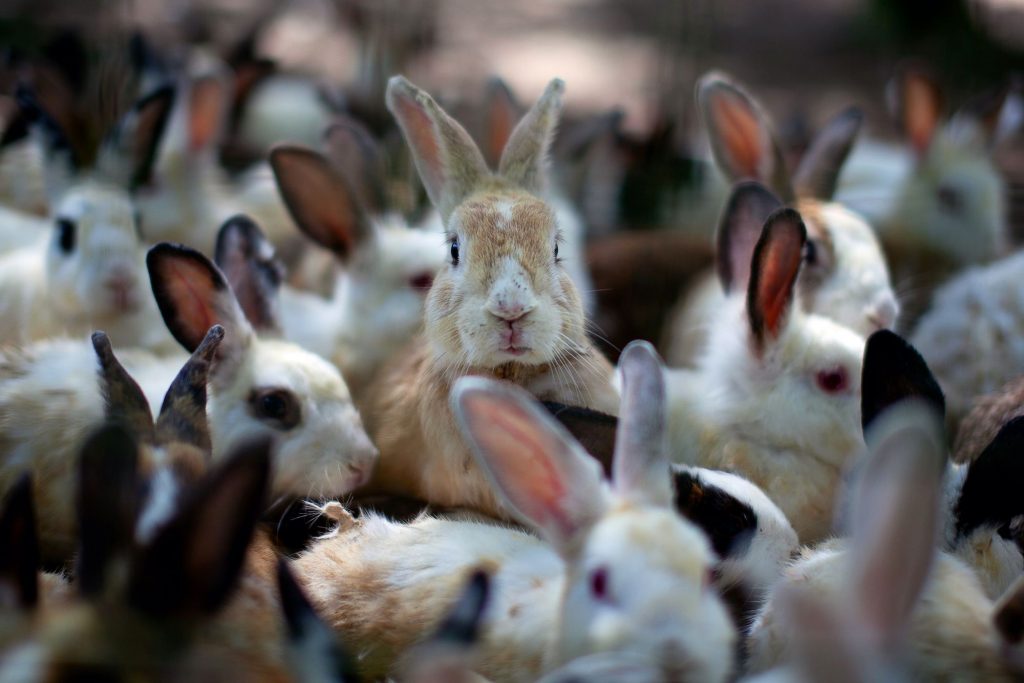Rabbit farming is a very profitable business, no doubt about this.
To increase your productivity, however, breeding is a fulcrum of successful rabbit rearing.
Rabbit breeding has seasons – you can start planning to mate your rabbit as early as autumn.
The weather condition, the quality of the breed you’re raising, and the number of litters you’re planning for the year are some of the factors to consider as well.
Rabbit Breeding Techniques
As a rule, breeding can start at 4 or 5 months for a rabbit that has been produced before.
If you’ve selected a healthy rabbit with a parent with a large litter size, your rabbit can produce up to 10 litters the first time.
To breed rabbits for profit, you should plan your breeding between October and May, that’s the best time for rabbit breeding.
To make mating easy and successful, take the female to the male and allow them to be together as a whole.
They should mate at least 3 times or more to make the breeding successful.
One of the signs that mating is successful is the fall-off of the doe.
You should target 2 to 3 litters per year per rabbit to increase your profit.
By breeding all year round, the number of offspring of valuable animals can be increased, which increases the selection possibilities.
Especially a high selection intensity considerably promotes the breeding progress.
Breeding selection in Rabbits
Only bunnies that fulfill important basic characteristics with regard to health, fertility, and vitality should be selected for breeding.
When selecting a breeding rabbit, there should be a consideration for body shape, the breed traits, as well as the behavior of the litter siblings or parent bunnies.
Most importantly, ask for the record of the parent rabbit before choosing a rabbit for breeding.
The rabbit should be strong, appear healthy, and have a good body conformation.
Select your breeding stock from a reputable breeder with a good track record.
Ask for feed conversion statistics, and purchase diseases resistant doe.
Rabbit Breeding Management
With regard to the age at first breeding, a distinction must be made between sexual maturity and breeding maturity.
Sexual maturity (from about 5 months of age) marks the beginning of reproductive ability.
However, breeding maturity is about physical development, which depends on the supply of nutrients.
In general, breeding maturity is reached when the normal weight typical for the breed is reached.
When selecting the bucks, priority should be given to fertility and heredity.
The mating ability alone is no guarantee for breeding suitability.
The mating is only carried out after the breed has reached breeding maturity.
Sufficient semen quality is maintained if the buck is used for mating two to three times a week.
In case of heavy strain, a resting period should be taken afterward.
After several months of rest, the mating and fertilization performance of the buck may be reduced.
Provided that optimal husbandry and feeding conditions are maintained, a buck can be used for three years or more.
Breeding rabbits are selected from young bunnies whose mothers have demonstrated fertility that’s above an average and rearing performance (suckling performance and nest care) in repeated litters.
Since the female rabbit can not raise more siblings than her teats, female rabbits with a high teat count must be used for breeding.
The number of teats varies within the different breeds but usually between 6 and 12.
The first allocation of the rabbit should not take place before the rabbit has reached breeding maturity in order not to disturb her own development.
With advancing age, fertility decreases. obesity also usually leads to a deterioration in breeding performance.
As long as the doe becomes pregnant without problems and raises a sufficient number of young per litter, she is suitable for breeding.








